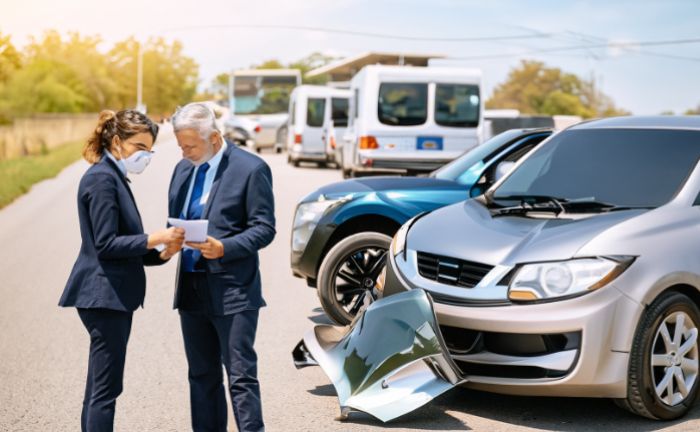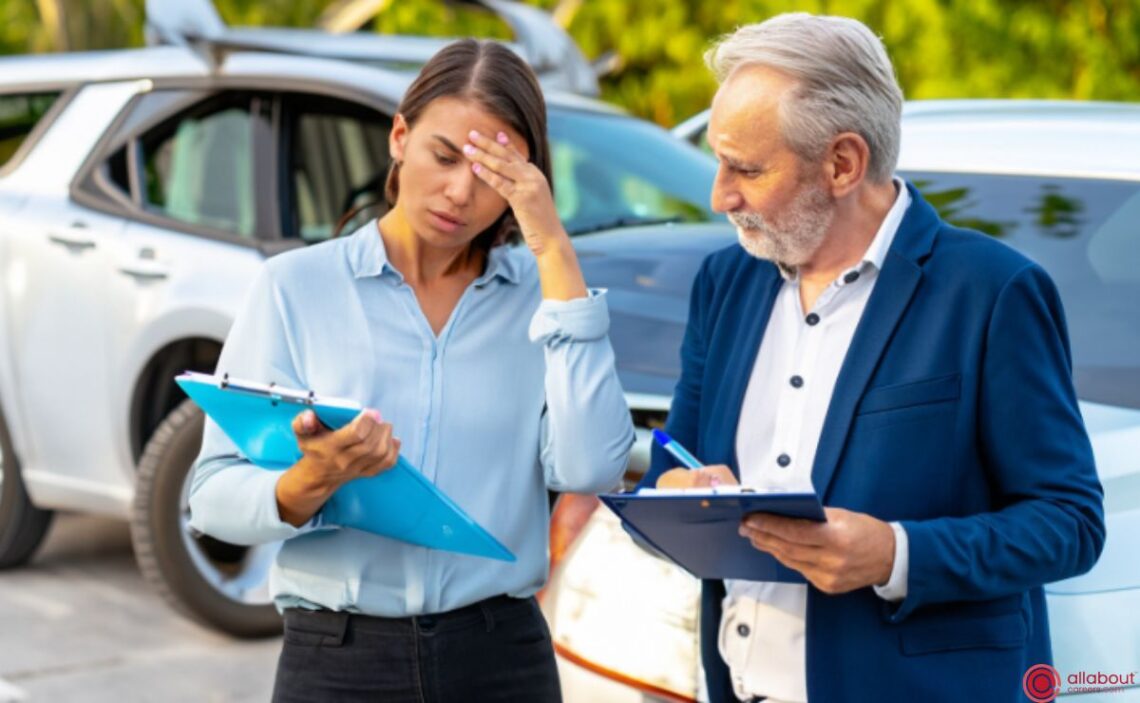“No-fault states” are unique in handling compensation and damage recovery after a car accident. Unlike traditional fault states where the at-fault driver’s insurance pays for damages, in no-fault states, each driver’s insurance covers their injuries and damages, regardless of who caused the accident.
This system speeds up the claims process and ensures timely medical treatment for victims. However, at-fault drivers can still be held liable in cases of severe injuries. Understanding these differences is essential for drivers as it can affect their insurance decisions and how they manage post-accident procedures.
What is a “no-fault state”?
“No-fault states” is a term used to describe jurisdictions where the assignment of fault or liability for a car accident does not hinge on who instigated the accident. In these states, all parties involved in the accident have the right to compensation from their respective insurance providers, regardless of who was at fault. This is a significant departure from the traditional tort-based systems, where one party must prove the other’s negligence to be eligible for compensation.
In no-fault states, each driver’s insurance policy must cover their medical expenses and lost wages up to a specified limit, irrespective of who was responsible for the accident. This system expedites the claims process by eliminating the need for a protracted investigation into who was at fault.

Moreover, no-fault states often provide additional benefits that may not be available in fault-based systems. These benefits can include coverage for rehabilitation services and household services, which can be invaluable for individuals recuperating from an accident.
Difference Between Fault and No-fault States
The main difference between at-fault and no-fault states lies in how liability is determined in traffic accidents and how insurance claims are handled.
In at-fault states, also known as tort states, the driver deemed at fault for the accident is responsible for covering the damages and injuries sustained. The at-fault driver’s insurance company usually pays for the damages and medical expenses of the innocent party involved in the accident. To receive compensation, the innocent party must provide evidence and initiate legal proceedings to prove the negligence or fault of the other driver.
In no-fault states, each driver’s insurance company covers medical expenses and damages, regardless of who caused the accident. This means that even if you were responsible for the accident, your insurance company would still cover your injuries and damages. The purpose of the “no-fault” system is to simplify the claims process, minimize legal disputes and ensure prompt compensation for medical expenses.
There are exceptions in “no-fault” states where drivers can claim compensation outside the “no-fault” system. These exceptions typically apply to severe injuries or damages exceeding specific state-defined thresholds.
Examples of car accidents in a fault and no-fault state
In a fault state example, Driver A runs a red light and collides with Driver B, causing injuries and damage to both vehicles. Driver B, who is not at fault, would file a claim with their insurance company. After an investigation, Driver A’s insurance company would be deemed responsible for covering the damages, medical expenses, and repairs for Driver B.
In a no-fault state example, the same accident occurs with Driver A running a red light and colliding with Driver B. However, regardless of fault, both drivers would file claims with their respective insurance companies. Each driver’s insurance company would then cover their medical expenses and damages up to the limits of their policy.
Driver A’s insurance company would cover the costs for Driver A, while Driver B’s insurance company would cover the expenses for Driver B. Each driver’s insurance coverage determines the responsibility for protecting the costs.
Who Pays for Car Damage in a No-Fault State?
In a no-fault state, each driver’s insurance company pays for their vehicle’s damage, regardless of who caused the accident. This is part of the Personal Injury Protection (PIP) coverage in no-fault states. However, it’s important to note that this typically covers medical expenses, and depending on the specific policy and state laws, property damage may or may not be included.
https://twitter.com/Bill_Fowler_/status/1690727894627016705
For extensive property damage, drivers may need to rely on their collision coverage or the at-fault driver’s property damage liability coverage, if applicable. It’s always best to check the specifics of your insurance policy and local laws to understand what is covered.
What does Personal Injury Protection (PIP) mean?
Personal Injury Protection (PIP) is a specific type of automobile insurance coverage offered in select states, particularly those operating under a no-fault insurance system. The primary purpose of PIP is to provide coverage for medical expenses arising from a car accident, regardless of who is deemed at fault. This means that even if you were responsible for causing the accident, your PIP coverage would still provide financial assistance for your medical costs.
How to claim a repair in a No-Fault State
In a no-fault state, claiming repairs to your vehicle after an accident may look different from the traditional at-fault system. Here is a step-by-step on how to claim a vehicle’s repair after an accident.
- To initiates the claims filing process, you must inform your insurance provider about the incident immediately after an accident. Be sure to provide precise details, including the date, time, location, and a thorough accident description.
- If it’s safe, take photographs of the accident scene, capturing the damage to your vehicle and any other relevant evidence. Documenting the incident can significantly aid the claims process.
- Your insurance provider may request that you get a repair estimate from a reputable repair shop. Some insurance companies have preferred repair shops they collaborate with. Ensure you adhere to the procedures your insurer instructs you to follow.
- Your insurance provider will assign an adjuster to assess and evaluate the damage to your vehicle. The adjuster will inspect the car and compare the repair estimate with the insurance company’s assessment.
- If the repair estimate aligns with the insurer’s procedures and standards, you’ll receive approval to proceed with the repairs. This may involve taking your vehicle to the insurer’s preferred repair shop or a shop of your choosing.
- Upon completion of the repairs, the repair shop will send the invoice to the insurance company. The insurer will review the invoice and, if everything is in order, will either issue payment directly to the shop or provide you with the funds to cover the repair costs.
- Ensure you fully understand your coverage terms. If your insurance policy includes a deductible, you must pay that amount before the insurer covers the remainder of the repair costs. Also, the collision coverage on your policy may influence how costs are handled.
- Throughout the process, maintain open communication with your insurer and the repair shop. If any issues arise or additional damage is discovered during repairs, inform the insurer immediately and seek their approval before proceeding.
As we said, there are exceptions in no-fault states where drivers can pursue compensation outside the no-fault system. This typically applies to cases involving severe injuries or damages that surpass specific thresholds defined by the state.
@questionsaboutcars What happens if you get into a car accident with a REALLY expensive car? 🤔 #caraccident #carcrash #luxurycars #thejerryapp #carinsurance
♬ original sound – Questions About Cars – Questions About Cars
That’s why it is essential to understand the laws and regulations specific to your state, as the rules regarding fault and no-fault can vary. Also, if you can afford it, it is better to seek guidance from a professional or legal adviser who can further clarify the distinctions and implications of at-fault and no-fault systems in your jurisdiction.
FAQs
What happens if my vehicle’s damages exceed my coverage limits?
You might be responsible for paying the difference if your damages exceed your coverage limits. Consider discussing options with your insurance company or seeking legal advice.
Does my insurance cover me if I’m injured?
Yes, your Personal Injury Protection (PIP) coverage under your insurance can help cover medical expenses, regardless of fault.
What if my repair costs exceed my coverage limits?
If your coverage exceeds your limits, you might be responsible for paying the remaining costs, so be aware of the expenses covered by your insurance.
References
- “A Guide For Understanding No-Fault Insurance.” Hendy Johnson Vaughn Emery, 25 Apr. 2024, https://justicestartshere.com/kentucky-a-no-fault-state-a-guide-for-understanding-no-fault-insurance/.
- “What to Do After a Car Accident | GEICO.” An Insurance Company For Your Car And More | GEICO, https://www.geico.com/claims/after-an-accident/.


